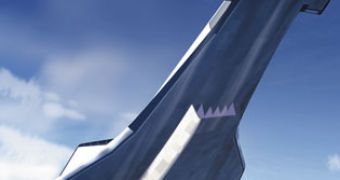So far, the only commercially successful supersonic jet was the Concorde, that regularly flew from London and Paris to New York and Washington. It set many records, including circumnavigating the world in a time of 31 hours 27 minutes 49 seconds flight, on August 16, 1995.
Although for the moment there are no immediate plans for new supersonic aircrafts after the retiring of the Concorde, the next generation of airliners could travel at speeds up to Mach 10 (around 12000 km/h, 10 times the speed of sound).
A team of scientists working in a collaborative project between Australia's Defence Science and Technology Organisation (DSTO) and the United States' Defense Advanced Research Projects Agency (DARPA), successfully performed a test flight for a new, experimental jet engine, capable of reaching this impressive speed.
During the test, that took place in the Australian outback, the scramjet flew for 12 minutes and 15 seconds, at an altitude of 530km, and reached a maximum speed of Mach 10, during re-entry to the earth's atmosphere.
A scramjet is a type of jet that uses a supersonic flow in the combustor, and consists of a constricted tube through which inlet air is compressed by the high speed of the vehicle, a combustion chamber where fuel is combusted, and a nozzle through which the exhaust jet leaves at higher speed than the inlet air.
"The test has obtained the first-ever flight data on the inward-turning scramjet engine design," DARPA spokesman Steven Walker said. "We are pleased ... and believe that a hypersonic airplane could be a reality in the not too distant future."
The new design could offer many applications, like low-cost satellite launching as well as high-speed passenger aircraft that could make the flight between Sydney and London in just two hours.

 14 DAY TRIAL //
14 DAY TRIAL //